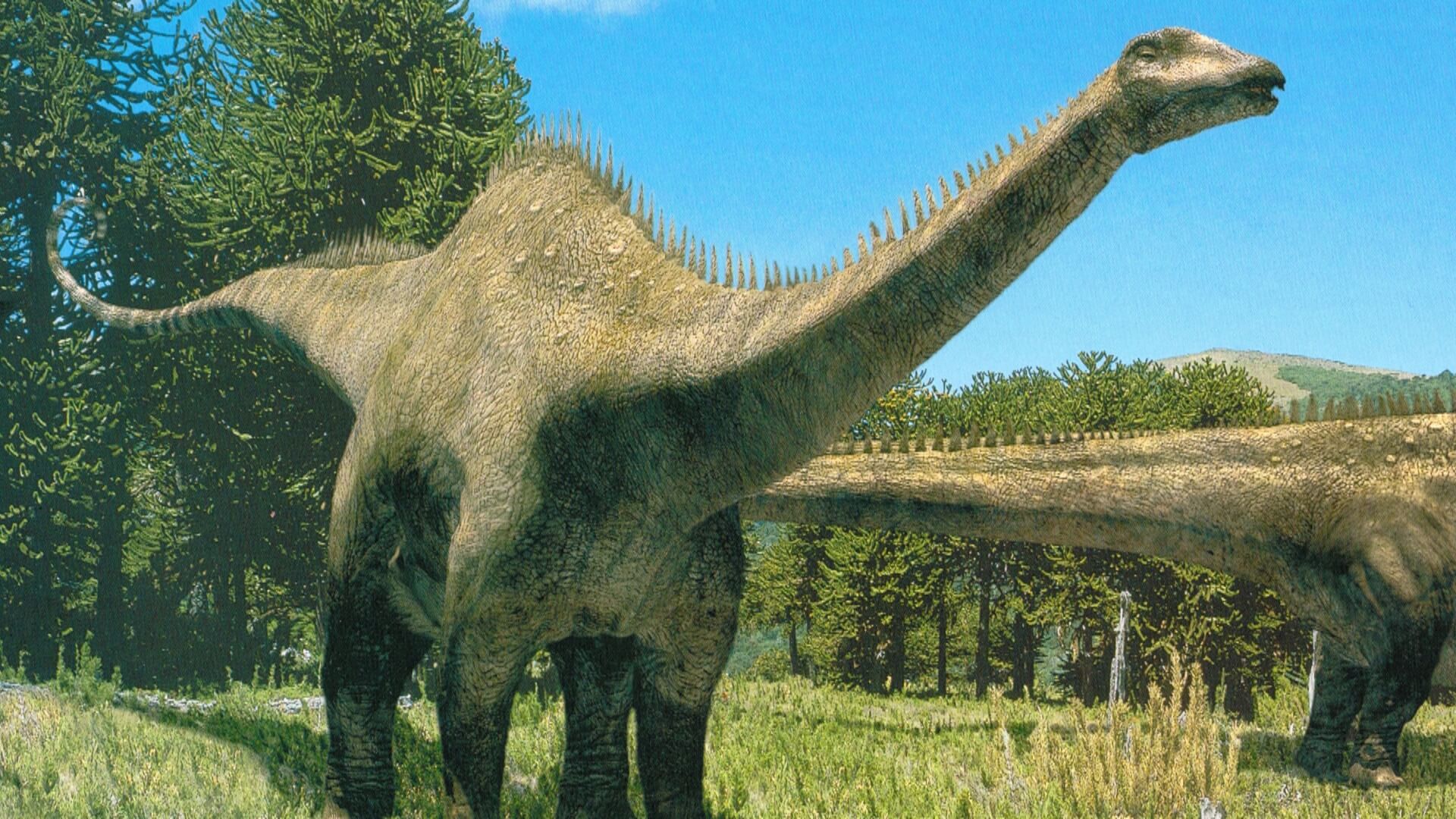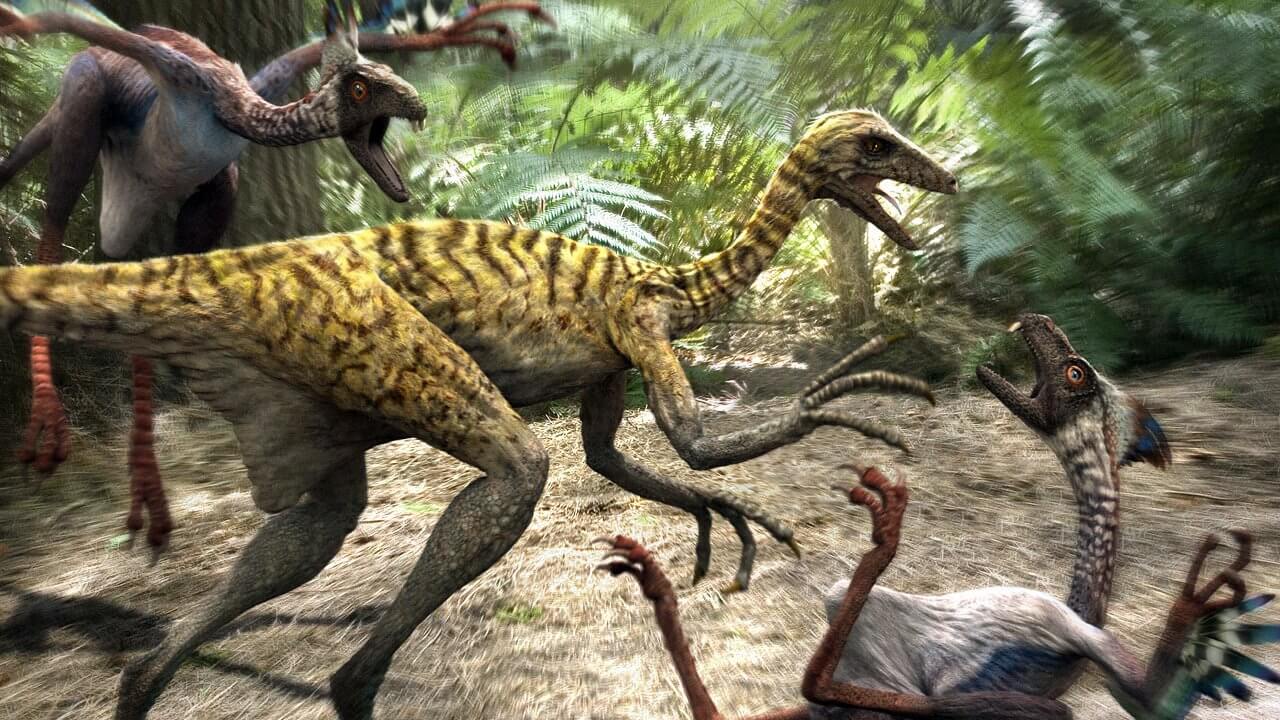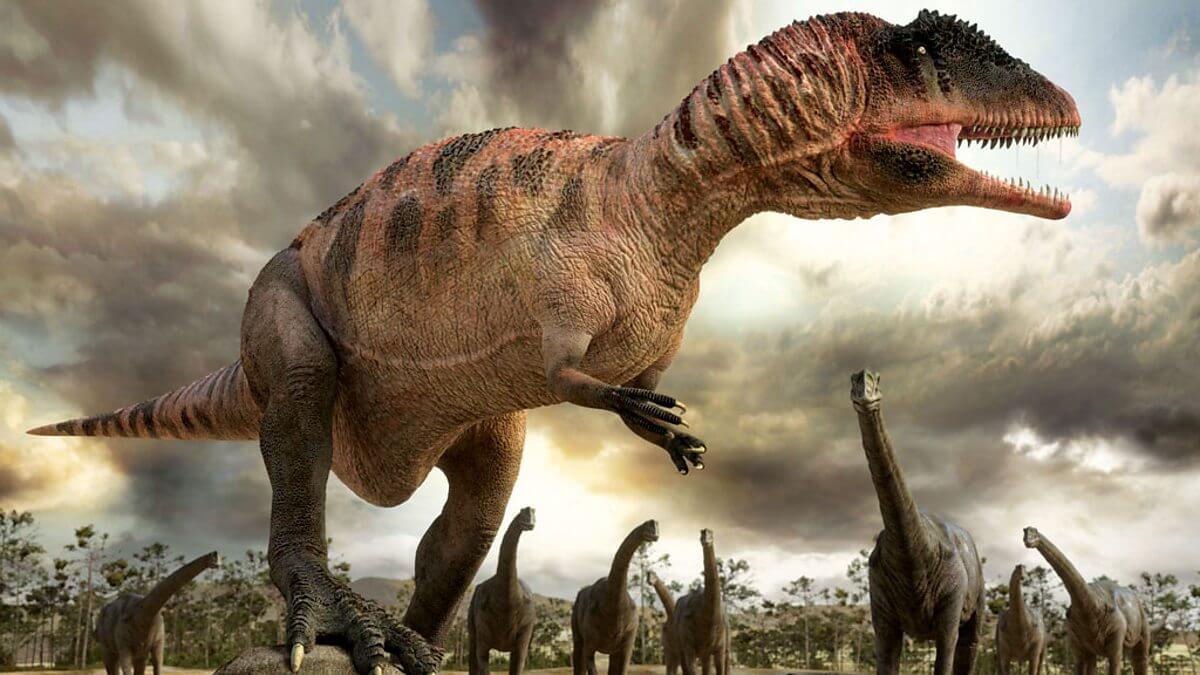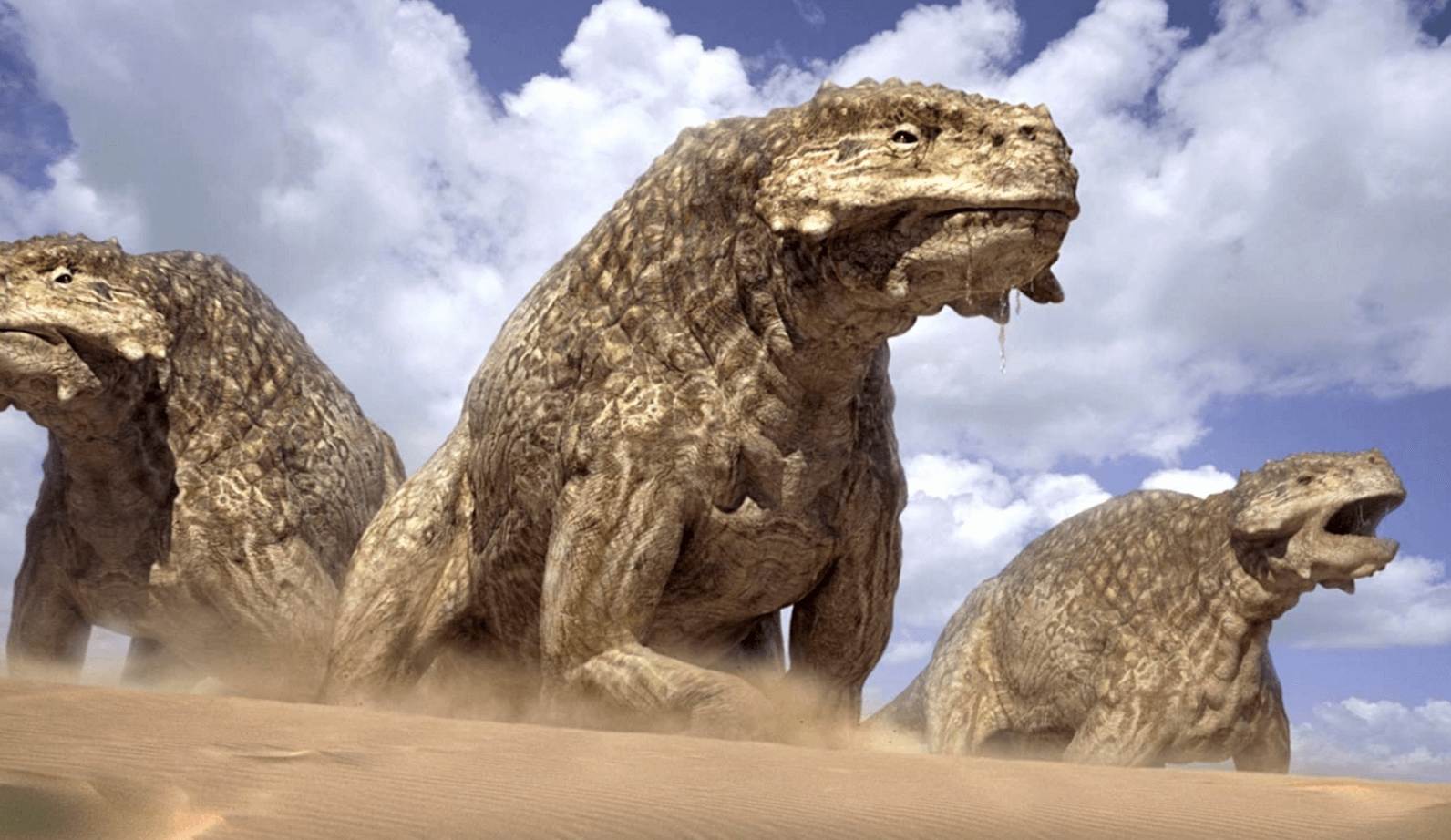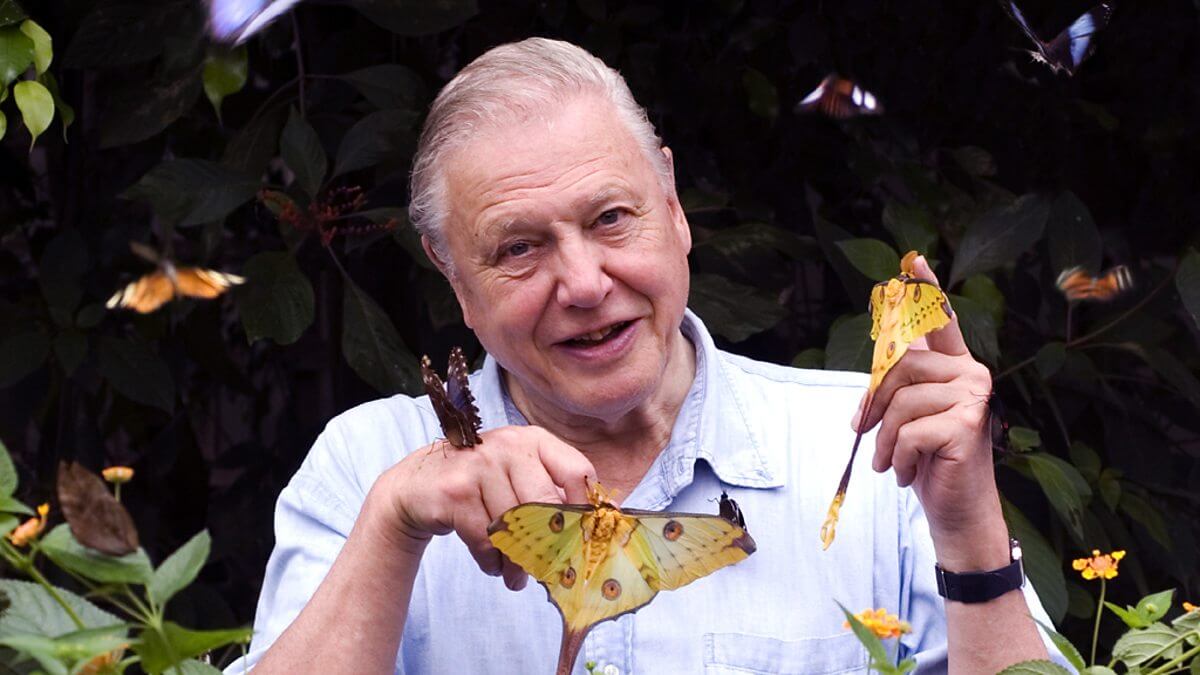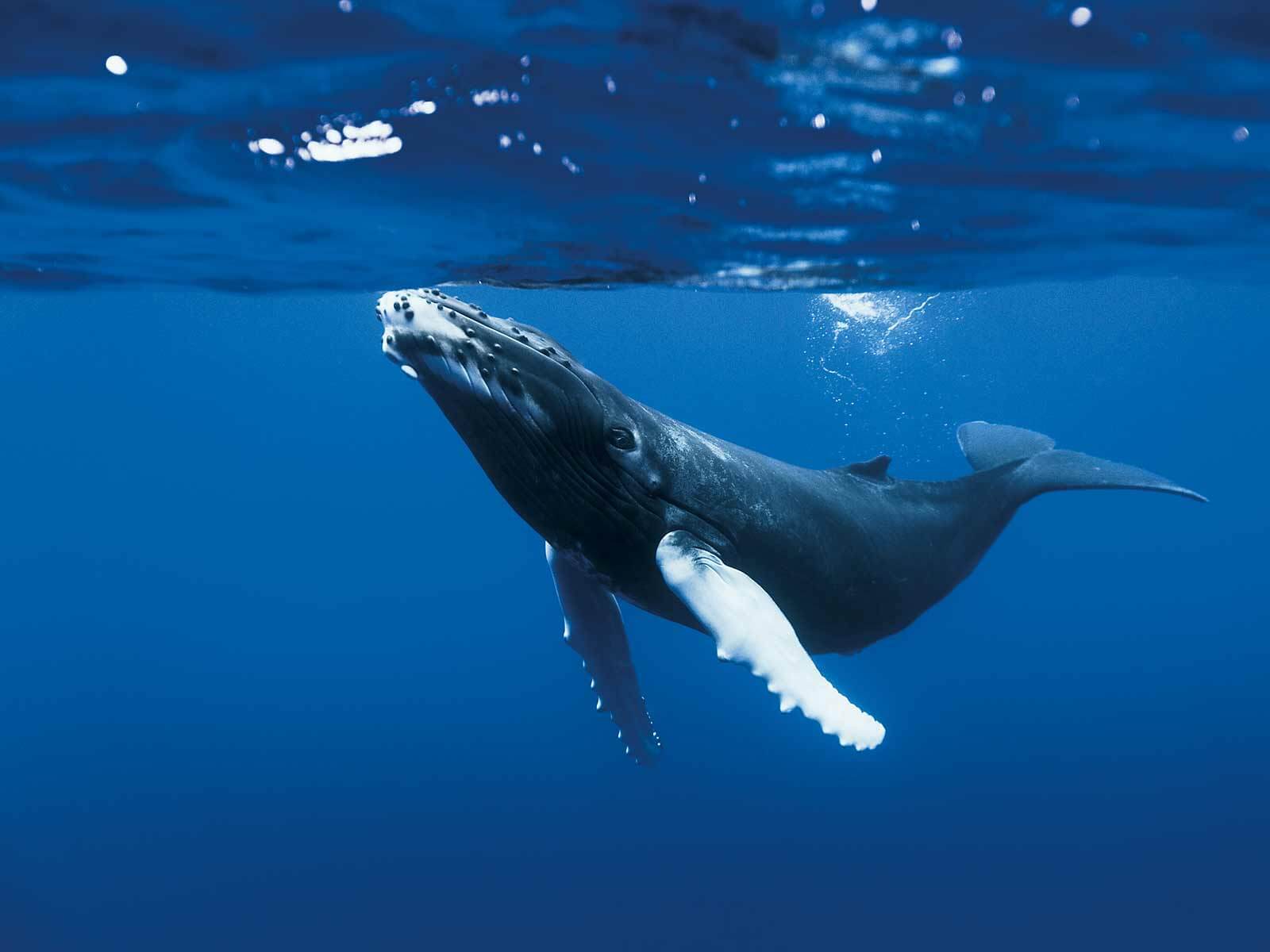description:
Walking with Dinosaurs is a six-part documentary television miniseries that was produced by BBC, narrated by Kenneth Branagh, and first aired in the United Kingdom, in 1999. The series was subsequently aired in North America on the Discovery Channel in 2000, with Branagh’s voice replaced with that of Avery Brooks. It is the first entry of the Walking with… series and used computer-generated imagery and animatronics to recreate the life of the Mesozoic, showing dinosaurs and their contemporaries in a way that previously had only been seen in feature films. The programme’s aim was to simulate the style of a nature documentary and therefore does not include “talking head” interviews. The series used palaeontologists such as Michael Benton, Thomas R. Holtz, Jr., Peter Dodson, Peter Larson and James Farlow as advisors (their influence in the filming process can be seen in the documentary The Making of Walking with Dinosaurs).
Scientific inaccuracies:
Michael J. Benton, a consultant to the making of the series (and Professor of Vertebrate Palaeontology at Bristol University), notes that a group of critics gleefully pointed out that birds and crocodiles, the closest living relatives of the dinosaurs, do not urinate; they shed waste chemicals as more solid uric acid. In the first episode of Walking with Dinosaurs, Postosuchus urinates copiously.
However, Benton notes that nobody can prove this was a real mistake: copious urination is the primitive state for tetrapods (seen in fish, amphibians, turtles, and mammals), and perhaps basal archosaurs did the same. He believes many other claims of “errors” identified in the first weeks fizzled out, as the critics had found points about which they disagreed, but they could not prove that their views were correct. Ornithocheirus was depicted as far larger than it actually was. In the book based on the series, it was claimed that several large bone fragments from the Santana Formation of Brazil possibly indicate that Ornithocheirus may have had a wingspan reaching almost 12 metres and a weight of a hundred kilogrammes, making it one of the largest known pterosaurs.However, these specimens have not been formally described. The largest definite Ornithocheirus specimens known measure 6 metres in wingspan. The specimens which the producers of the program used to justify such a large size estimate are currently undescribed, and are being studied by Dave Martill and David Unwin. Unwin stated that he does not believe this highest estimate is likely, and that the producers likely chose the highest possible estimate because it was more “spectacular.” However, no other Early Cretaceous pterosaurs reached its size. Similarly, Liopleurodon was depicted as being 25m long in the series, whereas the adult size known to have been reached by Liopleurodon is around 7m.
episodes:
220 million years ago, Late Triassic (Arizona)
Filming location: New Caledonia
The episode follows a female Coelophysis as she tries to survive during the dry season in what will become the North American Southwest. The Coelophysis is shown stalking a herd of Placerias (a giant synapsid or mammal-like reptile), looking for weak members to prey upon. A male mammal-like cynodont is shown downstream, returning to his burrow from the river. A female rauisuchian Postosuchus (one of the largest carnivores alive in the Triassic) is shown attacking the Placerias herd, and bites one of the members, driving the rest of the herd to retreat and leave the wounded and weakened member of the group to the carnivore. Early pterosaurs called Peteinosaurus are depicted feeding on dragonflies and cooling themselves in what little water is present during the drought. Still searching for food, the Coelophysis are shown discovering the cynodont burrow (and are initially frightened away by the emerging male). Eventually, one young cynodont strays too close to the entrance and is eaten before the father can drive the predators away.
At night, the pair of cynodonts are shown eating their remaining young, then moving away, while during the day, the Coelophysis work to expose the nest. The female Postosuchus is later shown to have been wounded by Placerias’s tusks (the wound is on her left thigh), and after being unable to successfully hunt another member of the Placerias herd she is beaten out of her territory by a rival male Postosuchus. Wounded, sick and without a territory, the female dies and is eaten by a pack of Coelophysis. As the dry season continues however, food becomes scarce and extreme measures are taken by all animals. The Placerias herd embarks on a trek through parched wasteland in search of water and are not seen again, meanwhile the Coelophysis start killing and cannibalising their young. The cynodont also resorts to hunting baby Coelophysis during the night. Finally, the wet season comes, and the majority of the Coelophysis have survived (including the female), along with the cynodont pair, who have a new clutch of eggs. The episode ends with the arrival of a herd of the prosauropod Plateosaurus, foreshadowing the future dominance of the giant sauropods after the Triassic-Jurassic extinction event.
Animals: Coelophysis · Cynodont · Placerias · Postosuchus · Peteinosaurus · Plateosaurus · Dragonfly · Lungfish · Lacewing
152 million years ago, Late Jurassic (Colorado)
Filming location: California State Parks, Chile, Tasmania, New Zealand
This episode follows the life of a young female herbivorous sauropod Diplodocus beginning at the moment when her mother lays a clutch of eggs at the edge of a conifer forest. Months later, some of the eggs hatch and the young sauropods are preyed upon by Ornitholestes. After hatching, the young female and her siblings retreat to the safety of the denser trees. As they grow, they face many dangers, including repeated predation by Ornitholestes and Allosaurus. Even the herbivorous Stegosaurus kills one of her siblings while swinging its tail. In parallel, adult herds of Diplodocus are depicted as titanic eating machines that use their massive weight to topple trees in order to get at the leaves of cycads in between trunks. The Diplodocus are also shown to host their own small mobile habitats that include damselflies, Anurognathus and dung beetles.
Close to adulthood, the group of five-year old Diplodocus grow to 13 meters and are nearly all killed by a huge forest fire. In the end only three, then two, survivors including the female make it onto the open plains, where they find a herd and safety. Years later, the protagonist female mates, but not long afterwards is attacked by a bull Allosaurus. She is saved when another Diplodocus strikes the allosaur with its tail. In the end it is commented that her kind will only get bigger. In the DVD release, most of the narration from the original broadcast is missing.
Animals: Diplodocus · Allosaurus · Ornitholestes · Stegosaurus · Brachiosaurus · Anurognathus · Dryosaurus · Dung Beetle · Damselfly · Ornithopod
149 million years ago, Late Jurassic (Oxfordshire)
Filming location: The Bahamas, New Caledonia
The opening portrays a Liopleurodon snatching a Eustreptospondylus from the land, but there is no evidence of this ever occurring (according to the producers, they were influenced by similar attacks by killer whales on land creatures, such as sea lions). Meanwhile, the ichthyosaur Ophthalmosaurus live-breeding ceremony is the main event taking place, as hundreds of Ophthalmosaurus arrive from the open ocean to give birth. In the midst of the birthing sharks and other predators, including the pliosaur Liopleurodon, are on the hunt, and when one mother has trouble giving birth, a pair of Hybodus sharks go after her, but are frightened off by a male Liopleurodon, which eats the front half of the Ophthalmosaurus, leaving the tail to sink down. Meanwhile a Eustreptospondylus swims to an island and discovers a turtle carcass that it must contend for with another Eustreptospondylus. Later during the night, a group of horseshoe crabs gather at the shore to lay their eggs, which attracts a flock of Rhamphorhynchus in the morning to eat the eggs. However two or three of the pterosaurs are caught and eaten by a Eustreptospondylus. While the Ophthalmosaurus juveniles are growing up, they are still hunted by Hybodus, which in turn, are prey for the Liopleurodon.
At one point, while the male Liopleurodon is hunting for prey, he is encountered by a female Liopleurodon. After biting one of her flippers, she retires from his territory. A typhoon then strikes the islands, and kills many animals, including several Rhamphorhynchus. The Liopleurodon is washed ashore and lays upon the beach, eventually suffocating under his own weight. The carcass then becomes the banquet of a group of hovering Eustreptospondylus. At the end of the episode, the juvenile Ophthalmosaurus that survived the storm and are now large enough to swim off to live and breed in the open sea.
Animals: Ophthalmosaurus · Liopleurodon · Eustreptospondylus · Cryptoclidus · Rhamphorhynchus · Hybodus · Ammonite · Leptolepis · Horseshoe Crab · Squid · Bark Beetle · Turtle · Jellyfish · Fish · Coral
127 million years ago, Early Cretaceous (Brazil)
Filming location: New Zealand, Tasmania
The story begins with a male Ornithocheirus (pterosaur) dead on a beach. It then goes back six months to Brazil, where the Ornithocheirus, resting among a colony of breeding Tapejara (pterosaur) flies off for Cantabria where he too must mate. He flies past a migrating column of Iguanodon and a Polacanthus (all herbivorous dinosaurs). He reaches the southern tip of North America, where he is forced to shelter from a storm. To pass the time, he grooms himself, ridding his body of Saurophthirus fleas while his snout begins to show color changes. He then sets off across the Atlantic (which was then only 300 kilometres wide) and after a whole day on the wing, reaches the westernmost of the European islands. He does not rest there however, as a pack of Utahraptor are hunting Iguanodon. He flies to the outskirts of a forest to rest, but is driven away by Iberomesornis birds. Flying on, he reaches Cantabria, but due to the delays and his exhaustion he cannot reach the centre of the many grounded male Ornithocheirus, and consequently he does not mate. After hours under the sun trying to attract a mate, and worn out by his travels and advanced age, Ornithocheirus dies from exhaustion. In the end, a young Ornithocheirus is seen feeding on his carcass.
Animals: Ornithocheirus · Utahraptor · North American Iguanodon (now known as Dakotadon) · Iguanodon · Tapejara (now known as Tupandactylus) · Polacanthus · Iberomesornis · Pteranodon · Plesiopleurodon · Saurophthirus · Pterosaur · Fish · Wasp
106 million years ago, Middle Cretaceous (Antarctica)
Filming location: New Zealand
A few hundred kilometres from the South Pole, a clan of herbivorous Leaellynasaura are seen emerging to activity after months of total darkness. Now with the coming of spring, the members of the clan are shown feeding on the fresh plant growth and building nests so they can lay their eggs. A male amphibian Koolasuchus has also woken up from hibernation and heads to a river where he will stay during the summer. Out on the rocky river banks, migrating herds of herbivorous Muttaburrasaurus have arrived to feed on the fresh vegetation and lay their eggs. By summer, many of the Leaellynasaura clan’s eggs have been eaten, but those of the matriarch hatch successfully. A male polar Allosaur is shown hunting the Leaellynasaura and Muttaburrasaurus, but fails and must resort to scavenging, refusing to share the carcass with a female Allosaur. The Leaellynasaura clan continues to prepare for the winter, as well as raising the young that have now grown.
When autumn arrives, the Muttaburrasaurus herd begins head back north, and the Koolasuchus leaves the river to find a pool in the forest to hibernate through the winter. However, during the migration some Muttaburrasaurus become lost in the forest and create a ruckus in the process of trying to get back to the herd. In the confusion, the male Allosaur manages to catch and kill the matriarch of the clan, while only one of the hatchlings survives the year. After the last day passes in a matter of minutes, winter descends, and the forest becomes almost completely darkened. The Leaellynasaura clan is able to stay active, using their large eyes to help them forage for food. During this time, the clan and other fauna use various methods of dealing with the cold, including suspended animation, hibernation or using group body temperature to maintain heat. Finally, spring returns, and two Leaellynasaura males challenge one another for the right to mate, and after a short confrontation, the clan establishes a dominant pair once again. In the end it is accepted that the shifting of the continents will soon pull the landmass closer to the South Pole, and that the forests, and all these dinosaurs will soon disappear.
Animals: Koolasuchus · Leaellynasaura · Polar Allosaur· Muttaburrasaurus · Steropodon[note 1] · Giant Weta · Tuatara · Unidentified Pterosaur · Giant Mosquito
65.5 million years ago, Late Cretaceous (Montana)
Filming location: Chile, New Zealand
This episode starts months before the extinction of the dinosaurs. The last dinosaurs are depicted living under intense environmental stress due to excessive volcanism. Many of the dinosaurs species still in existence are the largest and most developed of their respective generas, including Ankylosaurus, Quetzalcoatlus, and Tyrannosaurus rex. The story focuses on a female Tyrannosaurus who abandons her nest, the eggs rendered infertile due to volcanic poisoning. Her calls for a mate are answered by a smaller male who has kills a young Triceratops to appease her. Later, after repeated copulation, she eventually drives him off. The mother fasts for an extended period as she tends to her nest, dealing with raids by dromaeosaurs and marsupial Didelphodons. As the female tends to her vigil, the hadrosaur Anatotitan herds wander from islands of vegetation among fields of volcanic ash, while Torosaurus males rut for the right to mate and lose their young to attacking packs of dromaeosaurs.
Meanwhile, the mother Tyrannosaurus sees only three of her twelve eggs hatch and brings down an Anatotitan to feed herself and her brood. While defending her two surviving offspring several days later, the mother tyrannosaur is fatally injured by an Ankylosaurus who swings its clubbed tail and cracks her femur and ruptures internal organs. The chicks remain next to the carcass of their mother the next morning until they, and the rest of the non-avian dinosaurs in this region, are killed when an asteroid slams into the Earth, a catastrophe that triggers the Cretaceous–Paleogene extinction event. A short final sequence shows the present-day Earth, dominated by large mammals, but still populated with numerous forms of dinosaurs: the birds.
Animals: Anatotitan (now known as Edmontosaurus annectens) · Ankylosaurus · Deinosuchus · Didelphodon · Dinilysia · Dromaeosaurus · Quetzalcoatlus · Torosaurus · Tyrannosaurus · Triceratops (carcass) · Unidentified ornithopods
The Ballad of Big Al (distributed as Allosaurus: a Walking with Dinosaurs Special) is a combination biography-sequel for Walking with Dinosaurs . It focuses on an Allosaurus (Allosaurus fragilis) named Big Al and his constant struggle to survive in a world filled with danger. The special begins at the University of Wyoming, showing the bones of a sauropod followed by an Allosaurus named Big Al. After the ghost of Big Al wanders the museum for a bit, the film then travels back in time to 145 Mya showing a nest containing some eggs. Al and his siblings hatch and are helped out of the nest by their mother. She brings them to a river bank and the hatchlings start to hunt for insects. When the mother leaves the hatchlings temporarily, a year-old Allosaurus comes and kills one of them (fortunately, Al isn’t the victim).
Al is then shown at two years old. He is trying to hunt a flock of Dryosaurus. He hasn’t yet learned how to ambush so he fails to kill one of the swifter, smaller dinosaurs. Later, he snatches a lizard from a branch. Al comes across a dead Stegosaurus and an Allosaurus waiting for death in a pit of sticky mud. Meanwhile, a female Allosaurus, attracted to the Stegosaurus carcass, also gets stuck. She struggles to free herself, but fails. Al luckily avoids the same fate as he had learnt to avoid carrion. The trapped Allosaurus pair are stuck forever and die, their corpses left to Anurognathus. Five years pass, and a herd of Diplodocus are migrating across the prehistoric salt lake. Al is joined by several other Allosaurus and they attempt to bring a weak member of the herd down. Once the herd leaves the sick Diplodocus, the Allosaurs gather. Al is struck down by the neck of the Diplodocus. The pack wait for a few hours until the Diplodocus is brought down by heat exhaustion and his illness. Though they feed, within the hour an adult female Allosaurus scavenges the kill. A year passes by, and Al is shown drinking at a pond. His prescense however makes others around the pond nervous and the smell of blood he brings with him puts off a pair of Stegosaurus who were attempting to mate. Away from the pond, he discovers the scent of a female Allosaurus. She is not interested, but the inexperienced Al gets too close. She finally injures his right arm, deforms his right claw, and breaks his ribs, though Al is lucky enough to escape with his life. Later the dry season comes, and Al is attempting to hunt a flock of Dryosaurus. Whilst ambushing them, he trips on a log and badly breaks something in his right foot. As the dry season turns to a drought, Al’s limp from the fall gets worse and his right middle toe -which he broke in the fall- has become badly infected. Soon, unable to hunt, he dies in a dried-up riverbed, where two hatchling Allosaurus are hunting for bugs and come across his emaciated carcass. He is said not to have reached full size, dying as a mature adolescent and his fossilisation preserved even his injuries including the healed ribs and the infection on the toe.

